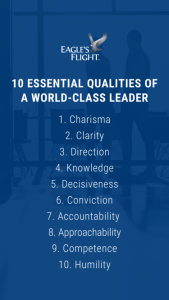Delegation in leadership not only helps get things done, but it also empowers employees by giving them greater autonomy. No leader can do all things at all times, and delegation is a key tool for boosting team and organizational performance and efficiency. A Gallup study found that companies led by CEOs who were strong delegators achieved a higher overall growth rate compared to companies whose CEOs delegated less.
Great leadership has many components, and delegation is an important factor for maximizing employee contributions and increasing productivity among all members of a team. Here are four reasons why delegation is essential for effective leadership.
Frees up Time
Achieving the right balance between the strategic and the tactical is important for any leader to be effective, especially with the many demands on their time and attention. In a survey conducted by the Strategic Thinking Institute, 96 percent of leaders said they lacked time for strategic thinking. When leaders delegate certain tasks to others, they become free to focus on higher-value activities and use their time more productively. Delegation not only gives leaders time for strategic thinking, but it also allows them to focus on other tasks that only they can perform, such as leading and coaching their teams. As outlined in a Harvard Business Review article, one team leader adopted a strategy of delegation and made the shift from simply being busy to being productive.
Encourages the Prioritization of Tasks
Delegation starts with determining which tasks can be delegated and which can’t. Prioritizing tasks helps leaders determine the most critical items to be delegated and who should perform them. One tool for developing a prioritization system for delegation is the Urgent vs. Important Matrix. Using this matrix, leaders can categorize tasks based on their time sensitivity and importance. Tasks or decisions that are less important but urgent, such as responding to a routine request from another team, can probably be delegated. Tasks that are both highly important and urgent might also be candidates for delegation as well, but perhaps to a more experienced member of the team.
Empowers Employees
Delegation empowers employees by enabling them to demonstrate their capability to take on new work. When individuals step outside of their typical day-to-day activities and have the chance to take on new tasks or get involved in decision-making, they become more invested in the outcome of their delegated responsibilities. Delegation helps people recognize their importance to the team, which fosters a deeper sense of commitment and engagement. Leaders can build a sense of empowerment among employees by delegating in areas such as:
- Project management—ask a member of the team to write the first draft of a project proposal.
- Client relations—select a member of the sales team to gather client data and background reading ahead of a client meeting.
- New system implementation—pick a couple of employees to test drive a new system and report back to the team with their findings.
Supports New Skill Development
Delegation builds new skills among team leaders and their direct reports. It gets newer leaders into a rhythm of accepting responsibility for outcomes without feeling that they must take on every single task themselves. When leaders learn how to delegate effectively, they are building competency in setting expectations, providing feedback, and ensuring accountability in others. For individuals who have responsibilities delegated to them, they have opportunities to learn a new process or interact with team members they might not deal with normally. These new experiences help them build skills in areas such as project management, teamwork, and communication.
Delegation involves more than just doling out tasks to other members of the team. Effective leaders carefully consider what to delegate and to whom, and understand how delegation makes their team more effective. Leadership development is a great way to teach leaders how to leverage delegation for improved productivity, empowered employees, and skill-building.












